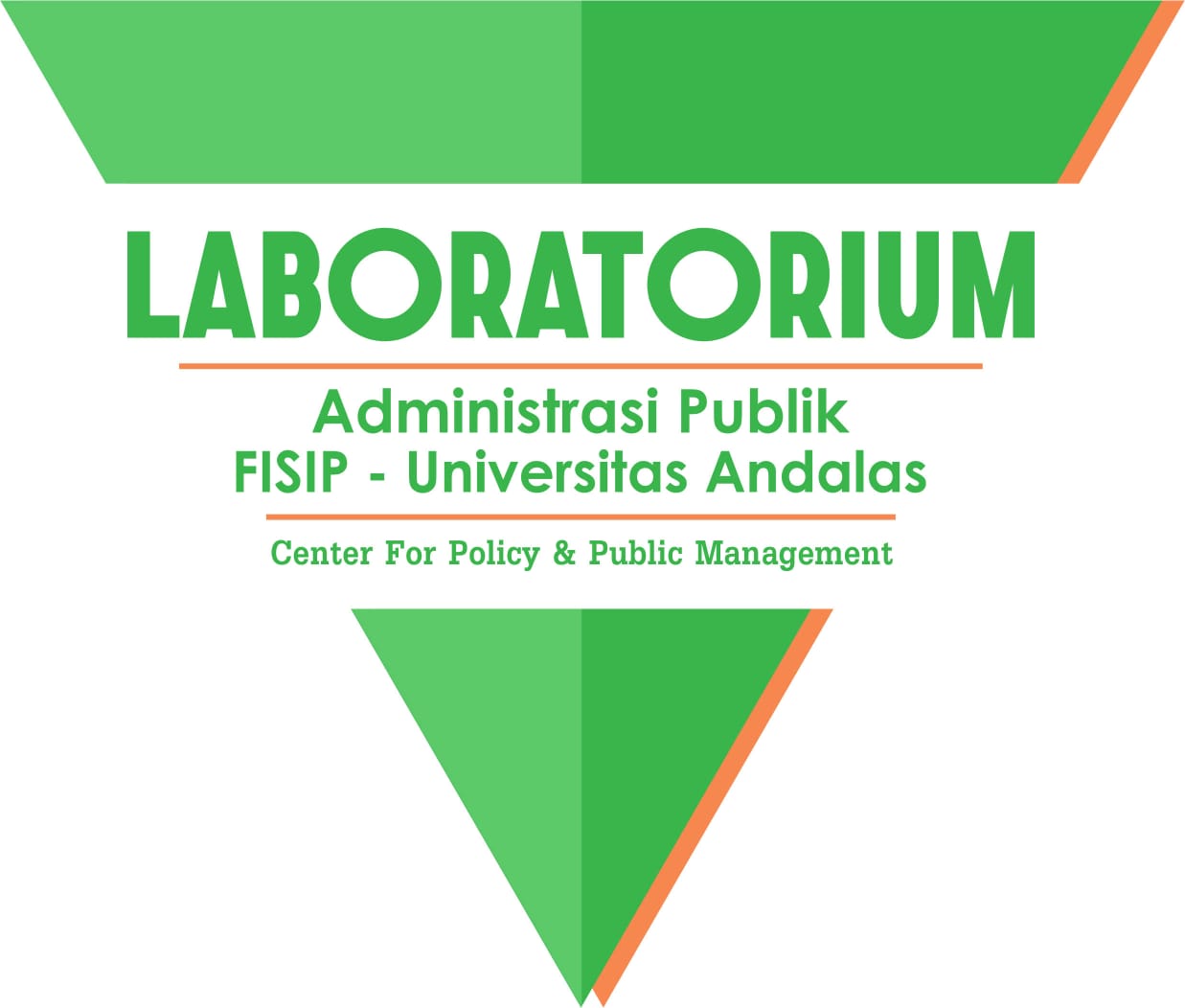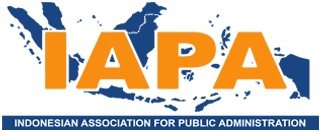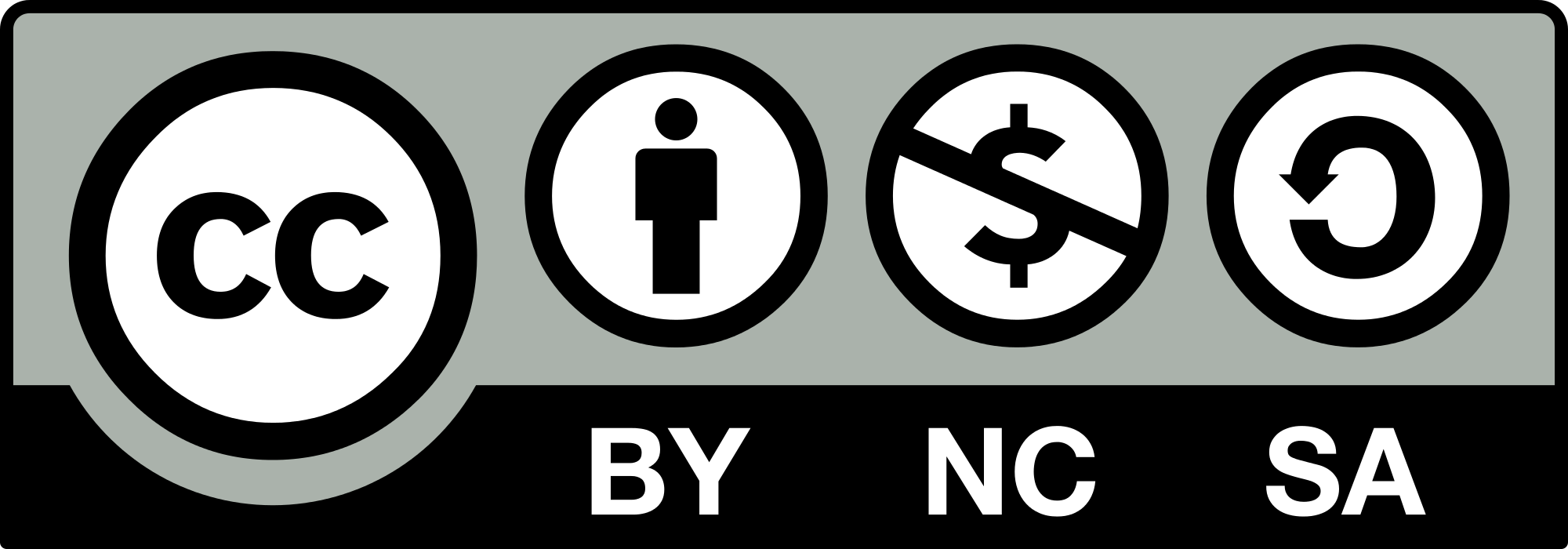Penerapan Kolaboratif E-Government Pada Pelayanan Kepegawaian Badan Kepegawaian Daerah Provinsi Sumatera Barat
Abstract
Collaborative E-Government not only changes the way government organizations carry out their duties but also changes the way the government interacts with its citizens in public services. This research aims to analyze and obtain a model regarding the implementation of collaborative E-Government at the Regional Civil Service Agency of West Sumatra Province in providing personnel services as proof that this collaborative E-Government is a solution to the never-improving quality of public services. This research uses a qualitative research method with a descriptive approach. Data collection techniques were carried out through interviews and documentation, where the informants in this research were selected purposively. The research results show that there is a dominance of fulfilling elements in the implementation of collaborative E-government, which has implications for improving personnel services in Regional Government. The only obstacles to collaboration are the network structure, governance, and access to resource elements. Thus, collaboration between actors in personnel services has become a solution to poor personnel service practices in local governments and has contributed to the development of literature on personnel service practice issues.
Downloads
References
Ae Chun, S., Luna‐Reyes, L. F., & Sandoval‐Almazán, R. (2012). Collaborative e‐government. Transforming Government: People, Process and Policy, Volume 6 Issue 1, pp. 5-12.
Ashaye, O. R., & Irani, Z. (2019). The role of stakeholders in the effective use of e-government resources in public services. International Journal of Information Management, 49, pp. 253-270.
Bertot, John Carlo, Paul T. Jaeger, and Justin M. Grimes. (2012). Promoting Transparency and Accountability through ICTs, Social Media, and Collaborative e-Government. Transforming Government: People, Process and Policy, Volume 6 Issue 1, pp. 78-91.
Bahar, M. M., Nurwahid, M. S., Putra, S. A., Parenreng, J. M., Wahid, A., & Irmawati, I. (2021). Perancangan Sistem Informasi Manajemen Kepegawaian (Simpeg) Berbasis Web Pada Universitas Negeri Makassar. Journal of Embedded Systems, Security and Intelligent Systems, Volume 2 Issue 1, pp. 1-6.
Borman, R. I., Rosidi, A., & Arief, M. R. (2017). Evaluasi penerapan sistem informasi manajemen kepegawaian (simpeg) di badan kepegawaian daerah kabupaten pamekasan dengan pendekatan human-organization-technology (hot) fit model. Respati, Volume 7 Issue 20. pp. 1-18.
Bungin, Burhan, (2017). Metodologi Penelitian Kualitatif. Jakarta: Kencana.
Creswell, John W, (2014). Research Design; Qualitative, Quantitative, and Mixed Methods Approaches. California: SAGE Publication: Thousand Oaks
DeServe, G. Edward, (2007). “Creating Managed Networks as a Response to Societal Challenges.” The Business of Government (2007): 47–52. http://www.businessofgovernment.org/sites/default/files/BOG_Spring07.pdf.
Fahmi, R. F. (2022). Strategi Komunikasi Badan Kepegawaian dan Pengembangan Sumber Daya Manusia dalam Digitalisasi Pelayanan Kenaikan Pangkat Pegawai Negeri Sipil. Jurnal Peurawi: Media Kajian Komunikasi Islam, Volume 5 Issue 1, pp. 63-100.
Faisal, Sanafiah, (199)). Dasar-Dasar Dan Aplikasi. Malang: YA3.
Fatahillah, M. (2022). Model Kolaborasi Pengembangan Geopark Bayah Dome. Jurnal Manajemen Dan Ilmu Administrasi Publik (JMIAP), Volume 4 Issue 1, pp. 17-28. https://doi.org/10.24036/jmiap.v4i1.356
Fedorowicz, Jane, Ulric J. Gelinas, Janis L. Gogan, and Christine B. Williams. (2009) “Strategic Alignment Of Participant Motivations In E-Government Collaborations: The Internet Payment Platform Pilot.” Government Information Quarterly Volume 26 Issue 1 pp. 51–59. http://dx.doi.org/10.1016/j.giq.2008.03.004.
Fernandez, S. (2019). Revitalisasi Teknologi Informasi pada Sistem Informasi Kepegawaian Universitas Muhammadiyah Bengkulu Menggunakan COBIT 4.1. Jurnal Media Infotama, Volume 15 Issue 2, pp. 99-105.
Gacitua, R., Astudillo, H., Hitpass, B., Osorio-Sanabria, M., & Taramasco, C. (2021). Recent Models for Collaborative E-Government Processes: A Survey. IEEE Access, 9, 19602-19618. Article 9317718. https://doi.org/10.1109/ACCESS.2021.3050151.
Gunadi, G. (2019). Qualitative system dynamics modeling of the impacts of maintenance, effort, competence and collaboration on e-government website availability. Electronic Government, an International Journal, Volume 15 Issue 2, pp 189-212.
Ibad, Syahrul & Wahyu Lolita, Yona. (2020). "Development and Urgency of Public Services through E-Government in the Middle of Pandemi Covid-19," Journal of Public Administration and Governance, Macrothink Institute, Volume 10 Issue 4, pp 273277-2732.
Juell-Skielse, G., Lönn, C. M., & Päivärinta, T. (2017). Modes of collaboration and expected benefits of inter-organizational E-government initiatives: A multi-case study. Government Information Quarterly, Volume 34 Issue 4, pp. 578-590.
Jurachman, A. (2018). Penerapan Sistem Informasi Manajemen Kepegawaian (Simpeg) di Badan Kepegawaian Daerah (BKD) Kabupaten Sidoarjo. Journal Inspirasi Manajemen Pendidikan, Volume 6 Issue 2, pp. 1-7.
Kadarisman, R., & Nugroho, E. (2013). Evaluasi Penerapan Sistem Informasi Manajemen Kepegawaian (SIMPEG) di Pemerintah Kota Bogor. Jurnal Nasional Teknik Elektro dan Teknologi Informasi, Volume 2 Issue 2, pp. 24-32.
Koeswara, H., Aromatica, D., Yulivestra, M., Kabullah, M., Liesmana, R., & Hidayat, E. (2020). Collaborative Governance dalam Kebijakan Sertifikasi Produksi Pangan Industri Rumah Tangga Kopi Bubuk Koto Tuo Kabupaten Tanah Datar. Jurnal Administrasi Dan Kebijakan Publik, Volume 5 Issue 2, pp. 193-207. https://doi.org/10.25077/jakp.5.2.193-207.2020
Kutsikos, K., & Kontos, G. (2011). A systems-based complexity management framework for collaborative e-government services. International Journal of Applied Systemic Studies, Volume 4 Issue 1-2, pp. 1-16.
Lumbanraja, A. D. (2020). Urgensi Transformasi Pelayanan Publik melalui E-Government Pada New Normal dan Reformasi Regulasi Birokrasi. Administrative Law and Governance Journal, Volume 3 Issue 2, pp. 220-231.
Lathifah, H. (2022). Collaborative Governance Dalam Penanggulangan Covid 19 di Kecamatan X Koto Diatas. Journal Of Policy,
Governance, Development and Empowerment, Volume 2 Issue 3), pp. 387-395. https://doi.org/10.24036/pgde.v2i3.161
Maulana, R. Y. (2020). Collaborative governance in the implementation of e-government-based public services inclusion in Jambi Province, Indonesia. Journal of Governance, Volume 5 Issue 1, pp. 91-104.
Maulana, Rio Yusri. (2022). Collaborative Digital Transformation Pemerintah Provinsi Jawa Barat. Jurnal Noken: Ilmu-Ilmu Sosial, Volume 7 Issue 2, pp. 263–277. https://doi.org/10.33506/jn.v7i2.1784
Majumdar, D. (2006). Collaboration among government agencies with special reference to New Zealand: A literature review. Social Policy Journal of New Zealand, Issue 27, pp. 183-198.
Mumtahanah, H. A., & Riyanto, S. (2019, November). Evaluasi Kebergunaan Sistem Informasi Kepegawaian Universitas PGRI Madiun dengan Pieces Framework dan Usability Testing. In Prosiding Seminar Nasional Teknologi Informasi dan Komunikasi (SENATIK), Volume 1, Issue 1, pp. 23-29.
Mutiarawati, T., & Sudarmo, S. (2021). Collaborative governance dalam penanganan rob di Kelurahan Bandengan Kota Pekalongan. Jurnal Mahasiswa Wacana Publik, Volume 1 Issue 1, pp. 82-98.
Nugroho, R. A., & Purbokusumo, Y. (2020). E-Government Readiness: Penilaian Kesiapan Aktor Utama Penerapan E-Government di Indonesia (E-Government Readiness: Main Actor Readiness Assessment for E-Government Application in Indonesia). JURNAL IPTEK KOM (Jurnal Ilmu Pengetahuan & Teknologi Informasi),Volume 22 Issue 1), pp. 1-17.
Nurdin, N., Stockdale, R., & Scheepers, H. (2014). Coordination and cooperation in e‐government: An Indonesian local e‐government case. The Electronic Journal of Information Systems in Developing Countries, Volume 61 Issue 1, 1-21.
Open Government Directive. (2009). Memorandum for the Heads of Executive Departments and Agencies Executive Office of the President, Washington, DC, available at: www. whitehouse.gov/omb/assets/memoranda_2010/m10-06.pdf.
Prabowo, I., & Fanida, E. H. (2018). Inovasi Pelayanan Kepegawaian Melalui Aplikasi Sistem Informasi Mobile Kepegawaian Terintegrasi (Simoker) Berbasis Android di Badan Kepegawaian Kota Mojokerto. Publika, Volume 6 Issue 9, pp.
Refinzar, R., & Kismartini, K. (2020). Inovasi e-Government dalam Pelayanan Publik (Studi Pada Faktor Pendukung dan Penghambat Program e-Musrenbang di Kota Surabaya). Kolaborasi: Jurnal Administrasi Publik, Volume 6 Issue 2, pp.227-250.
Rahman, D. A. (2022). Implementasi Usul Kenaikan Pangkat Melalui Sistem Informasi Aparatur Sipil Negara (Siasn) Di Kota Serang. Civil Service Journal, Volume 16 Issue 2, pp.1-8.
Ramon Gil-Garcia, J, Mila Gasco-Hernandez & Theresa A. Pardo. (2020). Beyond Transparency, Participation, and Collaboration? A Reflection on the Dimensions of Open Government, Public Performance & Management Review, Volume 43 Issue 3,pp. 483-502, DOI: 10.1080/15309576.2020.1734726.
Reich, Brian, (2010). Citizens View of Open Government. Lathrop, Danies & Ruma, Laurel. Cambridge: O'Reilly.
Rozikin, Mochammad, Wa Hesty, and Sulikah Sulikah. (2020). “Kolaborasi Dan E-Literacy: Kunci Keberhasilan Inovasi E-Government Pemerintah Daerah.” Jurnal Borneo Administrator Volume 16 Issue 1, pp. 61–80.
Sihaloho, Nahot Tua Parlindungan. (2022). Collaborative Governance Dalam Penanggulangan Banjir Di Kota Medan. Jurnal Ilmiah Muqaddimah : Jurnal Ilmu Sosial, Politik, dan Humaniora, Volume 7 Issue 2, pp. 161-174.
Sudarmo, (2011). Isu-Isu Administrasi. Publik Dalam Perspektif Governance. Surakarta: Smart Media,
Sufadmi, H., & Effiyaldi, E. (2020). Analisis Dan Perancangan Sistem Informasi Kepegawaian Berbasis Web Pada Kantor Komisi Pemilihan Umum Kota Jambi. Jurnal Manajemen Sistem Informasi, Volume 5 Issue 3, pp. 340-353.
Sundberg, L. (2016). Risk and decision in collaborative e-Government: an objectives-oriented approach. Electronic Journal of e-Government, Volume 14 Issue 1, pp. 35-46.
Sugiyono, (2007). Metode Penelitian Administrasi. Bandung: Alfabeta.
Telaumbanua, F. E. Y., Lase, D., & Waruwu, S. (2022). Penerapan Sistem Aplikasi Pelayanan Kepegawaian Dalam Meningkatkan Kualitas Pelayanan Administrasi Kepegawaian. Jurnal Akuntansi, Manajemen dan Ekonomi, Volume 1 Issue 2, pp. 320-326.
Ucok, M. N., & Lawi, A. (2014). Kakas kolaborasi e-government berbasis cloud computing. Jurnal Sain dan Teknologi, Volume 3 Issue 1,pp. 87-91.
Umar, Husein, (1994). Metode Penelitian Ilmu Administrasi. Jakarta: Gramedia,
Usman, Husnaini, (2003) .Metodologi Penelitian Sosial. Jakarta: Bumi Aksara.
Warkim, W., Muslim, M. H., Harvianto, F., & Utama, S. (2020). Penerapan Metode SCRUM dalam Pengembangan Sistem Informasi Layanan Kawasan. Jurnal Teknik Informatika dan Sistem Informasi, Volume 6 Issue 2, pp.365-378.
Wanna, John, (2008). Collaborative Government: Meaning, Dimension, Drivers and Outcome. In O'Flynn, Janine & Wanna, John (Eds.), Collaborative Governance: A New Era of Public Policy in Australia? ANU Press. http://www.jstor.org/stable/j.ctt24h315.
Weerakkody, V., & Reddick, C. G. (Eds.), (2012). Public sector transformation through e-government: experiences from Europe and North America. New York: Routledge.
Yusuf, I. M., Astuti, R. S., & Afrizal, D. (2021). The Role of Collaborative E-Government in Surabaya Intelligent Traffic System. In The 1st International Conference on Research in Social Sciences and Humanities (ICoRSH 2020), November, pp. 775-781.
Copyright (c) 2023 Debby Putri Pratama, Hendri Koeswara, Roni Ekha Putera

This work is licensed under a Creative Commons Attribution-NonCommercial-ShareAlike 4.0 International License.










